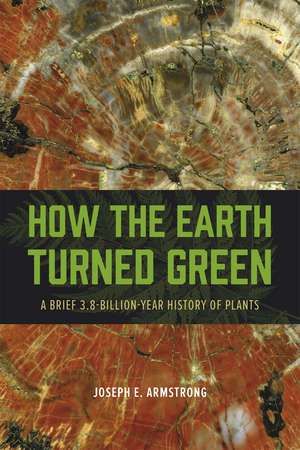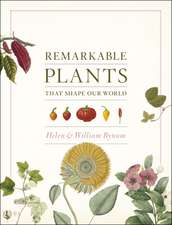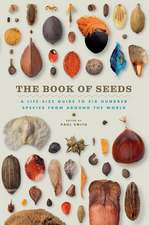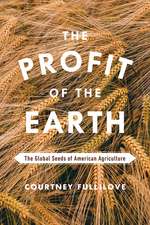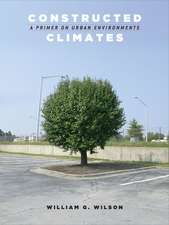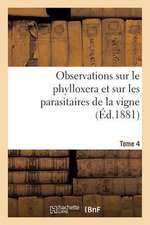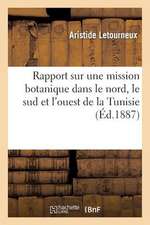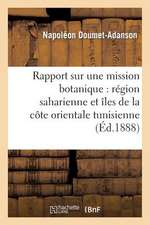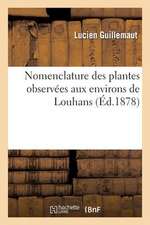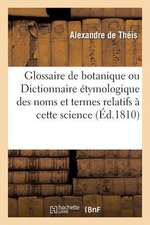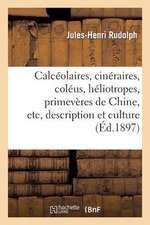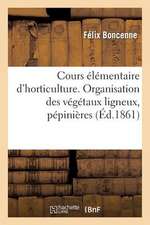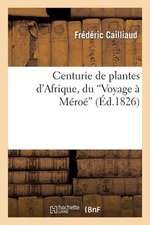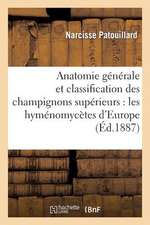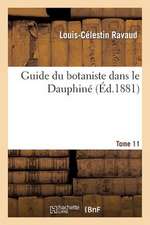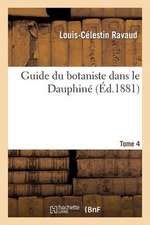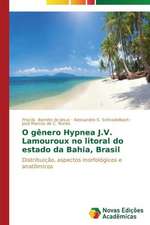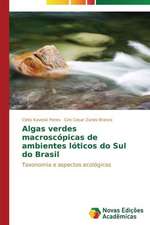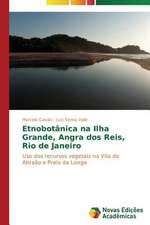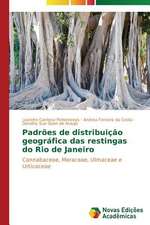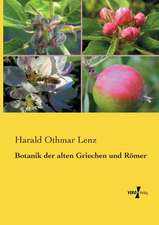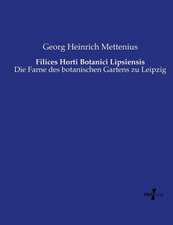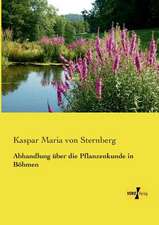How the Earth Turned Green: A Brief 3.8-Billion-Year History of Plants: Emersion: Emergent Village resources for communities of faith
Autor Joseph E. Armstrongen Limba Engleză Paperback – 25 sep 2014
On this blue planet, long before pterodactyls took to the skies and tyrannosaurs prowled the continents, tiny green organisms populated the ancient oceans. Fossil and phylogenetic evidence suggests that chlorophyll, the green pigment responsible for coloring these organisms, has been in existence for some 85% of Earth’s long history—that is, for roughly 3.5 billion years. In How the Earth Turned Green, Joseph E. Armstrong traces the history of these verdant organisms, which many would call plants, from their ancient beginnings to the diversity of green life that inhabits the Earth today.
Using an evolutionary framework, How the Earth Turned Green addresses questions such as: Should all green organisms be considered plants? Why do these organisms look the way they do? How are they related to one another and to other chlorophyll-free organisms? How do they reproduce? How have they changed and diversified over time? And how has the presence of green organisms changed the Earth’s ecosystems? More engaging than a traditional textbook and displaying an astonishing breadth, How the Earth Turned Green will both delight and enlighten embryonic botanists and any student interested in the evolutionary history of plants.
Using an evolutionary framework, How the Earth Turned Green addresses questions such as: Should all green organisms be considered plants? Why do these organisms look the way they do? How are they related to one another and to other chlorophyll-free organisms? How do they reproduce? How have they changed and diversified over time? And how has the presence of green organisms changed the Earth’s ecosystems? More engaging than a traditional textbook and displaying an astonishing breadth, How the Earth Turned Green will both delight and enlighten embryonic botanists and any student interested in the evolutionary history of plants.
Din seria Emersion: Emergent Village resources for communities of faith
-
 Preț: 144.99 lei
Preț: 144.99 lei - 9%
 Preț: 352.50 lei
Preț: 352.50 lei -
 Preț: 146.50 lei
Preț: 146.50 lei - 8%
 Preț: 360.28 lei
Preț: 360.28 lei -
 Preț: 185.37 lei
Preț: 185.37 lei -
 Preț: 183.89 lei
Preț: 183.89 lei -
 Preț: 115.53 lei
Preț: 115.53 lei - 6%
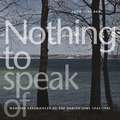 Preț: 324.95 lei
Preț: 324.95 lei - 8%
 Preț: 346.31 lei
Preț: 346.31 lei -
 Preț: 67.35 lei
Preț: 67.35 lei -
 Preț: 101.43 lei
Preț: 101.43 lei -
 Preț: 216.90 lei
Preț: 216.90 lei - 18%
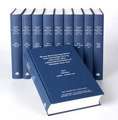 Preț: 2261.34 lei
Preț: 2261.34 lei -
 Preț: 215.52 lei
Preț: 215.52 lei -
 Preț: 167.85 lei
Preț: 167.85 lei -
 Preț: 179.04 lei
Preț: 179.04 lei - 12%
 Preț: 290.56 lei
Preț: 290.56 lei -
 Preț: 156.84 lei
Preț: 156.84 lei - 9%
 Preț: 353.24 lei
Preț: 353.24 lei -
 Preț: 186.09 lei
Preț: 186.09 lei -
 Preț: 176.49 lei
Preț: 176.49 lei -
 Preț: 133.99 lei
Preț: 133.99 lei -
 Preț: 144.80 lei
Preț: 144.80 lei - 18%
 Preț: 348.59 lei
Preț: 348.59 lei -
 Preț: 138.26 lei
Preț: 138.26 lei -
 Preț: 163.52 lei
Preț: 163.52 lei - 18%
 Preț: 502.35 lei
Preț: 502.35 lei -
 Preț: 182.98 lei
Preț: 182.98 lei -
 Preț: 208.55 lei
Preț: 208.55 lei -
 Preț: 279.55 lei
Preț: 279.55 lei - 8%
 Preț: 563.24 lei
Preț: 563.24 lei -
 Preț: 116.07 lei
Preț: 116.07 lei -
 Preț: 120.81 lei
Preț: 120.81 lei -
 Preț: 160.63 lei
Preț: 160.63 lei - 9%
 Preț: 352.77 lei
Preț: 352.77 lei -
 Preț: 106.35 lei
Preț: 106.35 lei -
 Preț: 273.93 lei
Preț: 273.93 lei -
 Preț: 316.40 lei
Preț: 316.40 lei -
 Preț: 548.71 lei
Preț: 548.71 lei -
 Preț: 138.81 lei
Preț: 138.81 lei -
 Preț: 152.25 lei
Preț: 152.25 lei -
 Preț: 229.92 lei
Preț: 229.92 lei -
 Preț: 94.22 lei
Preț: 94.22 lei -
 Preț: 203.53 lei
Preț: 203.53 lei -
 Preț: 145.41 lei
Preț: 145.41 lei - 8%
 Preț: 311.68 lei
Preț: 311.68 lei -
 Preț: 208.32 lei
Preț: 208.32 lei -
 Preț: 302.76 lei
Preț: 302.76 lei - 8%
 Preț: 565.01 lei
Preț: 565.01 lei
Preț: 307.55 lei
Nou
Puncte Express: 461
Preț estimativ în valută:
58.87€ • 63.97$ • 49.48£
58.87€ • 63.97$ • 49.48£
Carte disponibilă
Livrare economică 01-15 aprilie
Livrare express 15-21 martie pentru 45.76 lei
Preluare comenzi: 021 569.72.76
Specificații
ISBN-13: 9780226069777
ISBN-10: 022606977X
Pagini: 576
Ilustrații: 121 halftones, 31 line drawings, 4 tables
Dimensiuni: 152 x 229 x 33 mm
Greutate: 0.79 kg
Editura: University of Chicago Press
Colecția University of Chicago Press
Seria Emersion: Emergent Village resources for communities of faith
ISBN-10: 022606977X
Pagini: 576
Ilustrații: 121 halftones, 31 line drawings, 4 tables
Dimensiuni: 152 x 229 x 33 mm
Greutate: 0.79 kg
Editura: University of Chicago Press
Colecția University of Chicago Press
Seria Emersion: Emergent Village resources for communities of faith
Notă biografică
Joseph E. Armstrong is an award-winning teacher, professor of botany, head curator of the Vasey Herbarium, and director of the Organismal Biology and Public Outreach Sequence for Biological Sciences Majors, all at Illinois State University.
Cuprins
Preface: A Botanist at Large
1: A Green World
2: Small Green Beginnings
3: Cellular Collaborations
4: A Big Blue Marble
5: Down by the Sea (-weeds)
6: The Great Invasion
7: The Pioneer Spirit
8: Back to the Devonian
9: Seeds to Success
10: A Cretaceous Takeover
11: All Flesh Is Grass
Postscript
Appendix
Brown Algae and Tribophyceans
Clubmosses and Fossil Stem Groups
Conifers and Ginkgoes
Coniferophytes: Cordaitales and Voltziales
Cycads
Ferns
Gnetophytes
Green Algae
Green Bacteria
Hornworts
Horsetails
Liverworts
Mosses
Phytoplankton
Red Algae
Rhyniophytes and Trimerophytes
Seed Ferns
Whisk Ferns
Notes
Glossary
References
Index
1: A Green World
2: Small Green Beginnings
3: Cellular Collaborations
4: A Big Blue Marble
5: Down by the Sea (-weeds)
6: The Great Invasion
7: The Pioneer Spirit
8: Back to the Devonian
9: Seeds to Success
10: A Cretaceous Takeover
11: All Flesh Is Grass
Postscript
Appendix
Brown Algae and Tribophyceans
Clubmosses and Fossil Stem Groups
Conifers and Ginkgoes
Coniferophytes: Cordaitales and Voltziales
Cycads
Ferns
Gnetophytes
Green Algae
Green Bacteria
Hornworts
Horsetails
Liverworts
Mosses
Phytoplankton
Red Algae
Rhyniophytes and Trimerophytes
Seed Ferns
Whisk Ferns
Notes
Glossary
References
Index
Recenzii
“Armstrong . . . aims his book squarely at plant-blind readers, who see plants as just a green background to life. . . . [He] deftly entertains his readers with a balanced discussion of plant life on Earth, from cyanobacteria and stromatolites to flowering plants. . . . How the Earth Turned Green will make many a reader aware of the importance of plants to the history of this planet.”
“An intriguing compilation of developmental stages set in reverse order. This approach is vastly appealing, giving us subtle clues of how the Earth blossomed into such an incredible world that most of us simply take for granted. . . . With dozens of diagrams, illustrations and graphic constructs and charts, Armstrong gives us a glimpse of how it all evolved and how it all works together.”
“Armstrong has written an amazing and wonderful book. It is so well written that it reads more like an engaging novel—one that readers cannot put down—than like a science book. Yet the style is not reduced or simplified science; instead, the author explains all this factual material with prose that is precise, accurate, and concise. The topics range from cosmology to the flowering plants (angiosperms), but this vertical track is accomplished without deviating from the essential task of describing the evolutionary history of photosynthesizing organisms and their relations to planet Earth. Along the way, readers are treated to a synthesis of fundamental stages in the evolution of life itself. This includes an excellent discussion about the origin of life, an even better explanation of the origins of autotrophy in prokaryotes, and a very good description of the endosymbiotic theory. The text is followed by a 141-page appendix that describes all the major photosynthetic groups (including bacteria). This is an exceedingly useful resource for students, which, to this reviewer’s knowledge, does not exist anywhere else in such a compact form. Essential.”
“An impressive work that is clearly a labor of love. . . . Armstrong provides a big-picture overview of life on Earth through green-colored glasses, yielding a work that is accessible, scientifically rigorous, and philosophically piquant. Whether used as recreational reading or as a framework for an advanced undergrad or early graduate study course, How the Earth Turned Green is well worth reading for anyone attracted to the ‘green background’ through which we move.”
“A salient summary of the important concepts that should guide even a college professor teaching introductory biology. . . . How the Earth Turned Green should be required reading for all pre-service biology teachers and on the bookshelf of all K-16 science instructors. . . . Armstrong presents us with a unique approach to the plant kingdom. His refreshing wit and straightforward commentary lead the reader through an evolutionary explanation of why a predominant color of earth is green. His goal is to foster deeper understanding of key concepts, and he raises, and answers, many obvious questions that are almost never asked. As a doctor of botany, I enthusiastically prescribe this book to treat the widespread symptoms of ‘Plant Blindness.’”
“Armstrong is not only trying to tell the story of plant evolution. He also wants to explain how science works as well as the problems we face in establishing the relationships between the major plant groups and in developing a consistent plant taxonomy based on plant evolution. Thus he not only tells the story of plant evolution but also of plant evolutionary science. He does this with a great deal of humor and in an anecdotal way, which also make the book fun to read. . . . I enjoyed reading the book very much; even as a trained plant scientist I could find new ideas and concepts that I was not aware of. Thus, this book will be a treasure trove for non-botanists as well as for most plant scientists interested in plant evolution; in addition, I strongly recommend this book for students of plant biology and professional scientists.”
“Spoiler alert! This book could seriously change your view of what a textbook can be(!). . . . Whilst How the Earth Turned Green is quite technical in places, that should be viewed neither as a negative nor a surprise. . . . But its very informal style (which was most unexpected in—although refreshingly different for—a scholarly text) makes for a highly readable, educational account.”
“From Normal, Illinois, comes a decidedly not-normal book. . . . This volume is a completely new way of presenting the history of plants; it integrates details from cell or molecular biology with the fossil record. . . . Botanists will appreciate the fact that Armstrong identifies issues that need further research, not simply points that need ‘clarification,’ but questions with the potential to shift paradigms. As such, this truly remarkable book is a perfect gift for deans thinking about new hires, for newly tenured faculty looking to shift research focus, or for students, both undergraduate and graduate, who think that botany is boring, a discipline dominated, as Enrico Fermi once suggested, by the mere knowing of names.”
“A remarkable volume on the evolutionary history of green life on our planet. It is a thoroughly enjoyable and readable book on what might have been a dry and tedious subject: plant evolution and diversity. I highly recommend this book as a text for a class on green plant evolution or plant diversity, as a reference book on green plant structure and evolution, or as general reading for anyone interested in the topic.”
“Armstrong has opened a door to the sprawling majesty of plant biology and evolution in a way that informs without drudgery, infuses knowledge with example without pedantry, and lightens the heart with a fine sense of humor. This book should be read by anyone who can sense that the world around us is predominantly green.”
“Practicing or apprenticing botanists, plant biologists, agronomists, and horticulturists need a detailed understanding of the evolution of plants for a correct perspective on the organisms they study and use, but the current general textbooks provide an inadequate watered-down history. In How the Earth Turned Green, through the knowledge, skill, and friendly writing of Armstrong and the wisdom of the University of Chicago Press, we finally have a book to fill this gap. Its eleven chapters—the final two about the flowering plants—tell the whole story, backed up by a detailed and illustrated appendix on fossil and living ancestors going back to the green algae and cyanobacteria. An essential book for plant students and professionals.”
